Case studies
Industries
Resources
TikTok Collection
NEW
Table of Contents
You’ve probably heard about the value of customer content and the great efforts that brands go to in order to capitalise on it, but what exactly is User Generated Content Marketing and why is it so effective?
From building trust with customers to demonstrating social proof and increasing conversions, User Generated Content Marketing can be a gold mine, but only when used properly. Read on to find out how and why your marketing efforts should include a User Generated Content strategy.
User Generated Content Marketing is a new tool that brands have begun using to promote their online image and community. Markedly different from the ‘top-down’ approach traditionally employed by most marketing campaigns, UGC is almost a democratization of the process, allowing customers from all around the world the chance to contribute to a brand’s story.
The method is simple – collect photos from social media, mainly Instagram, that customers have uploaded and use them to show the various ways in which your product can be used. The main benefits of UGC are that it is organic and authentic, and therefore builds trust. This strategy can be applied across many sectors, including food and drink, furniture and fashion. Why not check out how these five fashion brands benefitted from UGC here.
It would be fair to say that User Generated Content Marketing is well-established in the advertising industry, with household names such as Nike and BMW making good use of social media to promote their products. By including their customers and encouraging contributions on their official pages, global brands acquire a human touch and boost their community vibes.
Research by Reevoo, our next customer reviews tool, found that 45% of consumers don’t trust what companies say about their own products. This figure suggests that any wise businessman would look for a way to change that, and increase customer confidence, given that the stakes here are high.
Ready to take your engagement to the next level? Book a demo with Flowbox now!
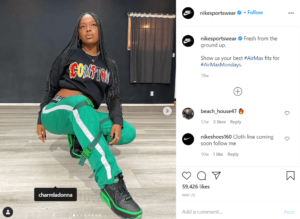
Nike encourages customers to post pictures using their products, such as their iconic Air Max trainers, which they can then share on their official account. This boosts their brand awareness and loyalty amongst fans, as well as inspiring other users to do the same.
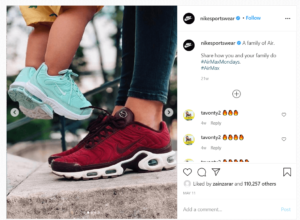
BMW have taken a similar approach here, reposting User Generated Content to show their product in everyday settings, giving a fresh perspective on their cars.

This example doesn’t even contain a shot of the product, but is still effective for marketing purposes due to the organic, personal feel which helps to build on the brand’s image and community.
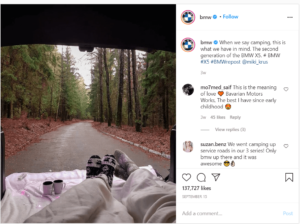
Now, this is the most basic way that User Generated Content Marketing is used by brands, but what other benefits can it have, and what other companies are capitalising on it? Let’s take a look at some examples of a few Photoslurp clients.
Customers that create content have little incentive to lie or be dishonest about a product, and as a result social proof is a very valuable sign that your product is the real deal. In this respect, User Generated Content could be considered to be the pinnacle of social proof – customers like your product so much that they’re not just leaving a written review, but are showing it off to their friends and family on social media.
Compare the more traditional approach by KARL LAGERFELD of models in a studio with their more innovative UGC marketing approach. Although the traditional method still serves a useful purpose and is certainly not obsolete, UGC offers a new level of trust with a more personable touch to customers, since they can see what the product looks like ‘in real life’ on a ‘real’ person.
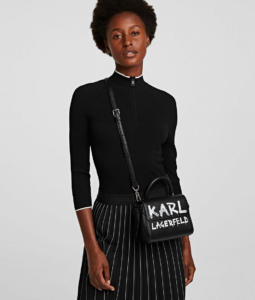

Consider here the difference between a model in a blank studio with the UGC approach, also utilised by KARL LAGERFELD, with the bag used in an urban, more familiar environment.


This is also a good example of KARL LAGERFELD catering to both approaches – on the one hand, a clear and straightforward shot of shoes in a studio, and on the other an individualised picture by the sea.
Take a moment to compare these two carousels, the first with its more traditional marketing approach and the second employing User Generated Content Marketing.
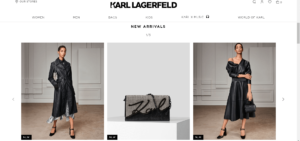
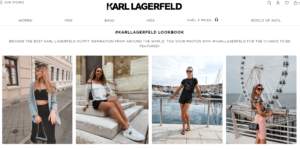
As you can see, while the typical approach still has a function, offering clear, well-lit shots, the User Generated Content Marketing approach provides for a more colourful and lively shopping experience, with the products used in a variety of different environments.
And what’s more, with Flowbox, you can embed User Generated Content onto your website and make it shoppable. In this picture, our clients KARL LAGERFELD have used the Galleries tool to allow customers to not only see social proof and brand community, but also to ‘Shop this look’, increasing their conversion rate in the process.
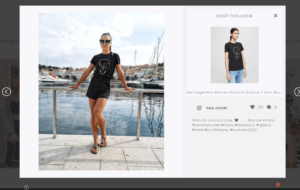
By integrating these widgets on their site, KARL LAGERFELD saw an average order value increase of 20.84%. Learn more about how KARL LAGERFELD did this in our case study.
So, you get the idea – the authenticity of UGC is hard to replicate, and important to include in your marketing efforts. But here’s the most impactful reason why you should invest in a UGC integration in your eCommerce: the increase of conversions.
Why not check out how to improve your email marketing strategy with UGC.
UGC is 5X more likely to make customers convert, and buy your products, than professional product shots. For fashion and apparel brands in particular, there’s huge potential for growing your engagement – and your sales.
Let’s look at Dutch watch brand and jewellery brand, CLUSE, and how they use User Generated Content Marketing to build social proof and increase conversions.
CLUSE elegantly integrated User Generated Content on their website, showing potential customers what their watches really look like on your wrist in different situations and places.
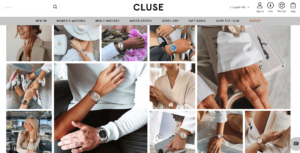
Using Flowbox technology to make their on-site UGC shoppable, they increased conversion rates by almost 20%, with CEO Rudyard Bekker describing User Generated Content Marketing as a ‘no-brainer’.
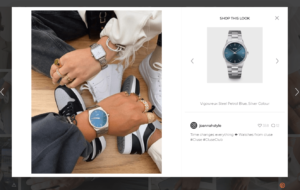
With this integration, customers on the CLUSE website have a seamless shopping journey in which they can buy any products that catch their eye straight away.
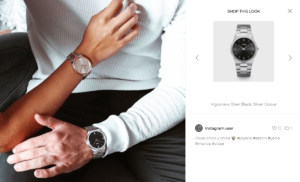
Read more about how they increased their conversion with UGC by checking out the CLUSE case study.
Now, User Generated Content Marketing is by no means limited to the fashion industry, either. Furniture companies, such as Kave Home, have realised the value of this form of advertising:
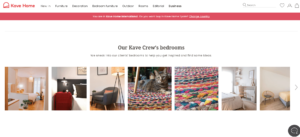
Potential customers can scroll carousels of User Generated Content featuring the brands’ products and shop the content in a similar manner as on the CLUSE and KARL LAGERFELD sites.
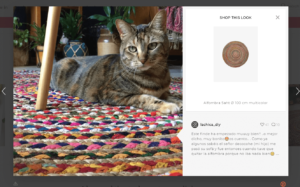
Described by Managing Director Victor Font as “a way to show our products from the eyes of our clients instead of the eyes of the brand,” the Kave Home website is a great example of how to use User Generated Content Marketing to increase conversion rates.
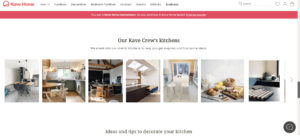
What’s more, since these kitchens are all by ‘real’ people in the ‘real world’, the images have greater credibility as they haven’t been artificially arranged for a photoshoot, never to be used again. Rather, they are the kitchens that people use and live in every day.
This makes them a powerful tool to highlight to future customers how Kave Home’s products might look in their own home.

Using photos by members of their customer community, Kave Home has been able to give a truly authentic and organic glimpse of what their products look like in everyday settings, rather than artificially arranged photo studios.
Through these UGC widgets, future customers can see the vast range of ways in which they can use the products, inspired by other customers who have direct experience with them. To find out more about Kave Home’s journey with UGC read this case study.
It’s clear to see that User Generated Content Marketing is a crucial tool for increasing sales and boosting conversion rates in the digital era. With all of the social content floating around, brands today can’t afford to lose out on this kind of fandom.
So don’t hesitate to get in touch to find out how you can leverage it for your own brand!